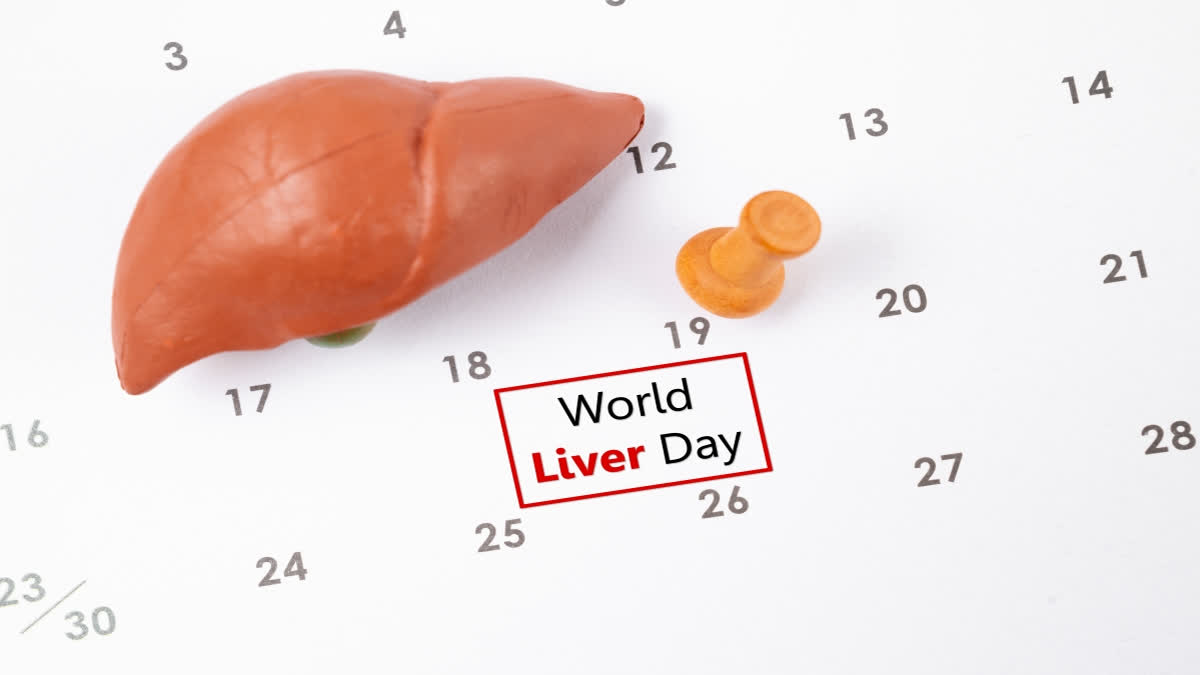World Liver Day 2024 is celebrated on April 19 annually to spread awareness about the various diseases of the liver. The day is observed to bring together the community, medical professionals and lawmakers to address the increasing cases of liver disease worldwide and promote preventive measures for liver disease.
World Liver Day was launched in 2010 by the European Association for the Study of the Liver (EASL). It began as a European initiative but soon gained global recognition. The event's date, April 19, was chosen to commemorate the founding of EASL in 1966. In 2019, India launched World Liver Day to raise awareness about liver-related diseases. In 2023, major liver associations expand this initiative worldwide.
This year’s World Liver Day theme is 'Be vigilant, get regular liver check-ups, and prevent fatty liver diseases'. This theme underscores the importance of early detection and prevention, particularly for fatty liver disease, a growing health concern.
Purpose of the Day:The purpose of World Liver Day is to raise awareness about liver health and promote liver disease prevention and the importance of early detection. The liver is a vital organ responsible for numerous essential functions in the body, including metabolism, detoxification, and nutrient storage.
The liver is an unsung hero, quietly performing over 500 crucial physiological functions in the body, including detoxification, maintaining good metabolism, and producing vital proteins. It is the largest organ in the body and is responsible for filtering blood before it passes through the rest of the body.
Despite its significance, liver health is often neglected, leading to staggering statistics. Liver disease can be passed through families, called inherited. Anything that damages the liver also can cause liver problems, including viruses, the use of toxic chemicals, alcohol use and obesity.
Symptoms of liver diseases
- Yellowing of the skin and the whites of the eyes, called jaundice
- Belly pain and swelling
- Swelling in the legs and ankles
- Loss of appetite
- Abdominal pain
- Fever
- Itchy skin
- Weight loss
- Dark urine
- Pale stool
- Constant tiredness
- Nausea or vomiting
Types of Liver Disease:
Hepatitis:It's caused by a virus or by other factors and can be transmitted through sexual contact. There are two main categories of hepatitis: Viral hepatitis and Non-viral hepatitis.
Cirrhosis:Cirrhosis refers to scarring that results from liver diseases and other causes of liver damage, such as alcohol use disorder.
Fatty liver disease:It's a condition in which excess fat is stored inside liver cells. Fatty liver disease can typically be treated with lifestyle changes, such as improving your diet and reducing your alcohol intake.
Liver cancer:Cancer that spreads to the liver is more common than cancer that begins in the liver cells. Liver cancer is a life-threatening illness. Fewer than 1 million cases per year (India) suffer from liver cancer.
By getting vaccinated, maintaining a healthy weight, practicing good hygiene, avoiding alcohol or drinking alcohol in moderation, practising safe sex, staying physically active and having regular health checkups can lower the risk of liver disease. With early diagnosis liver disease is treatable, and liver cancer can be avoided
Global Impact :
- 844 million people worldwide are affected by liver disease and 2 million deaths per year (roughly 5,500 deaths per day)
- It is responsible for 4 per cent of all deaths (1 out of every 25 deaths worldwide); approximately two-thirds of all liver-related deaths occur in men
- Liver cancer is also on the rise, with an estimated 905,677 cases occurring in 2020 alone
- Cirrhosis: Leading cause of death from liver disease, causing around one million deaths per year
- Viral Hepatitis presents additional global health challenges, with death rates beginning to outnumber those from HIV/AIDS.
India:
In India, the 'National Action Plan – Viral Hepatitis' was launched by the Centre. The aim of the program is to combat hepatitis and achieve countrywide elimination of Hepatitis C by 2030, achieve a significant reduction in the infected population, morbidity and mortality associated with Hepatitis B and C viz. Cirrhosis and Hepatocellular carcinoma (liver cancer) and reduce the risk, morbidity and mortality due to Hepatitis A and E.
In India, it is estimated that there are 40 million people suffering from Hepatitis B and 6-12 million people suffering from Hepatitis C.
